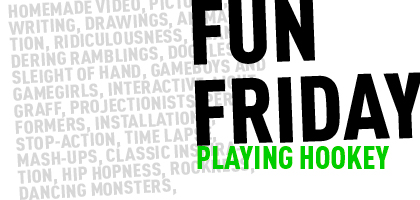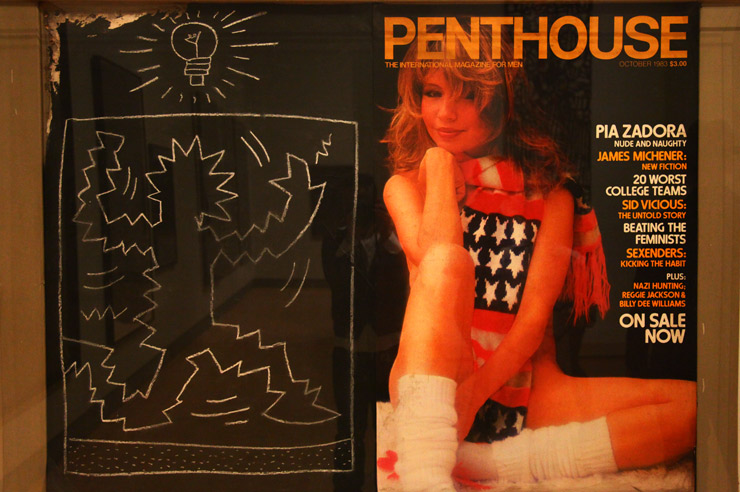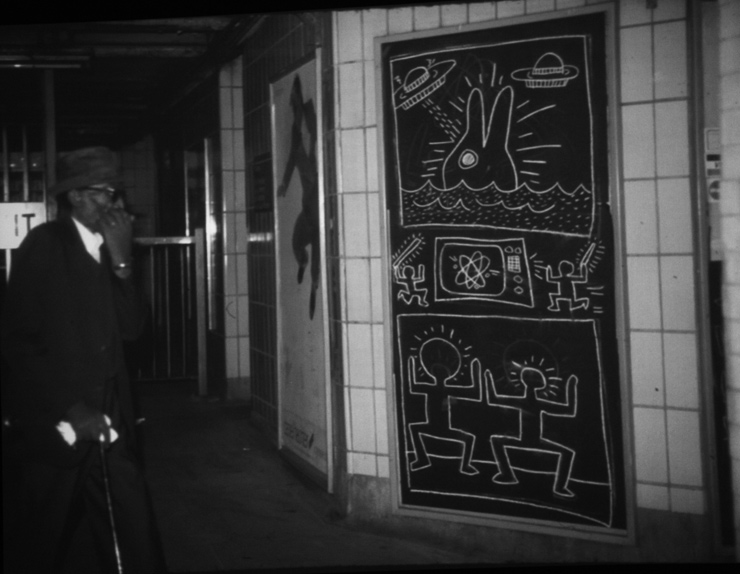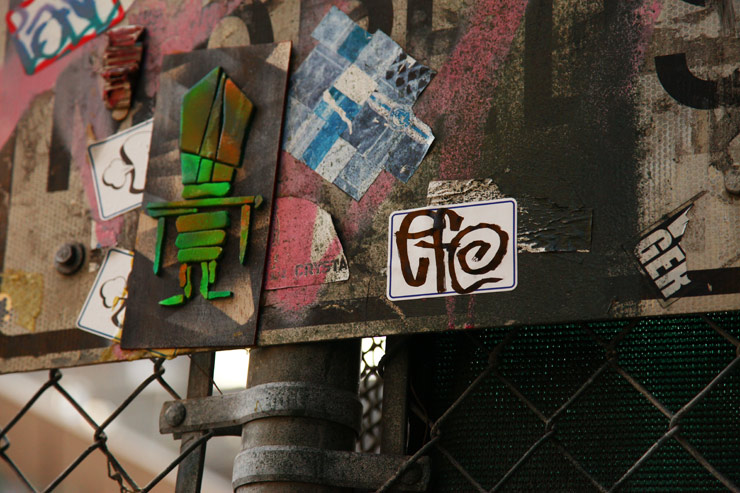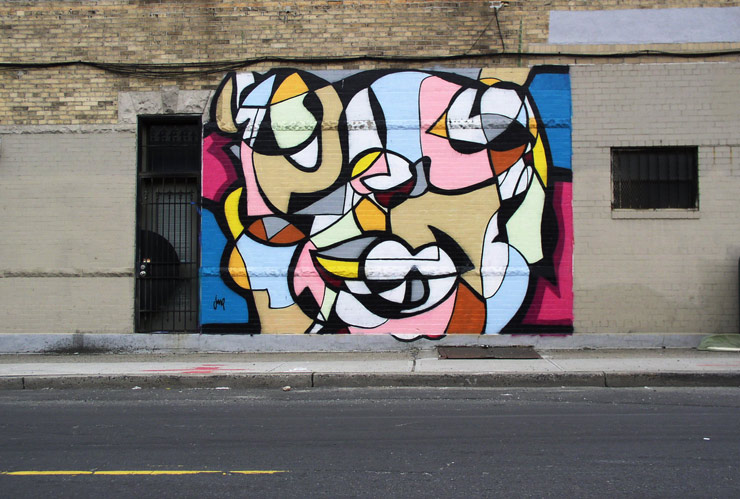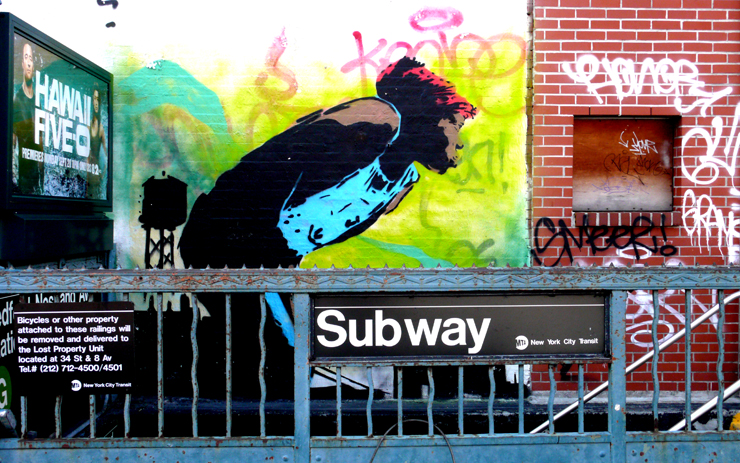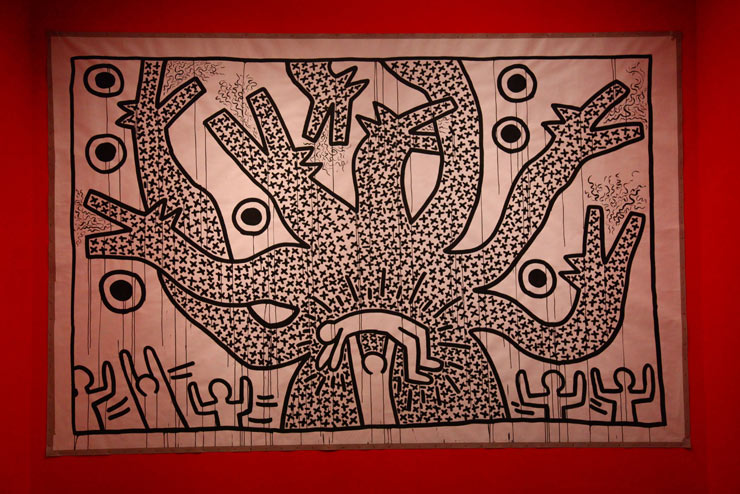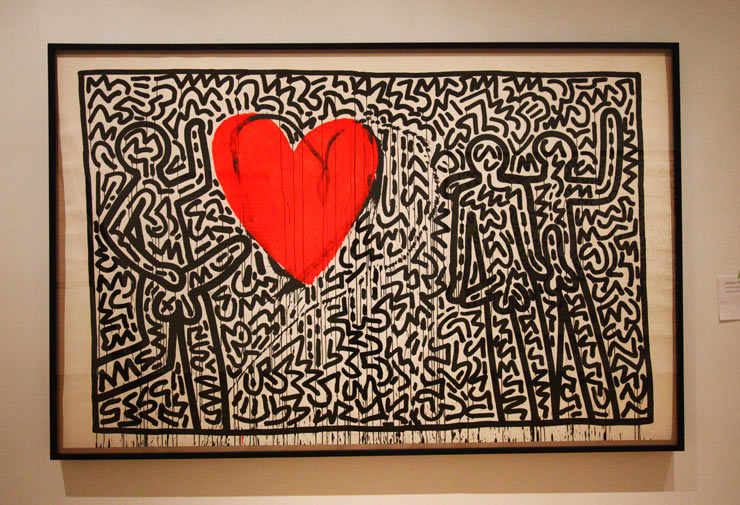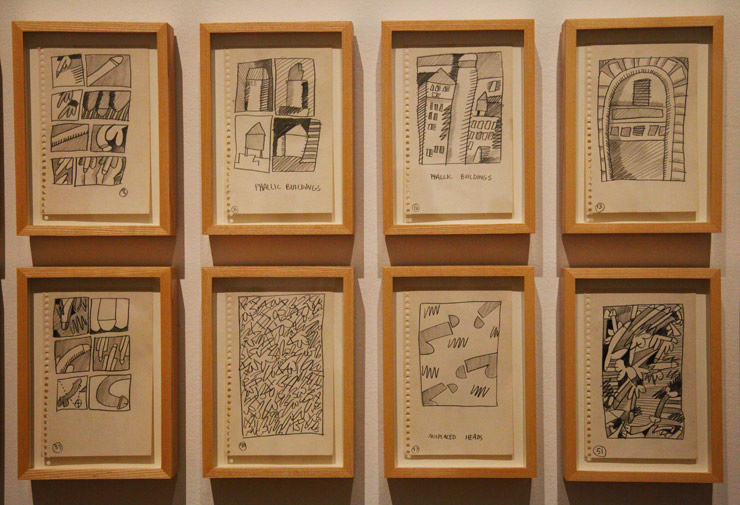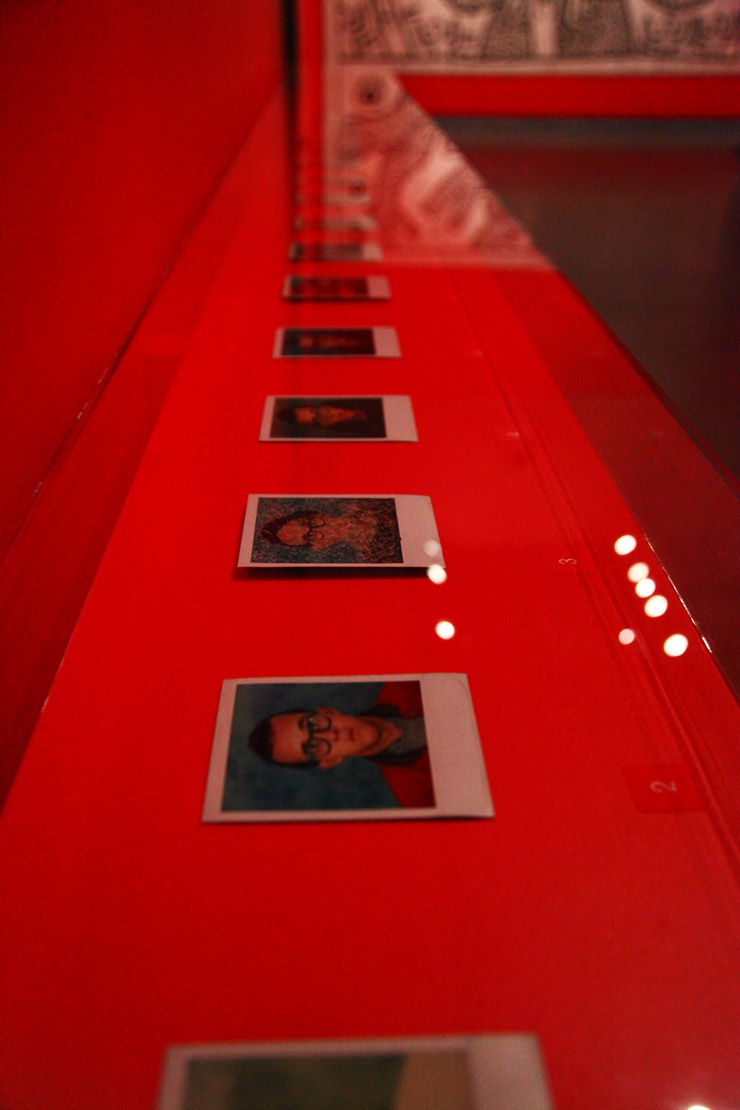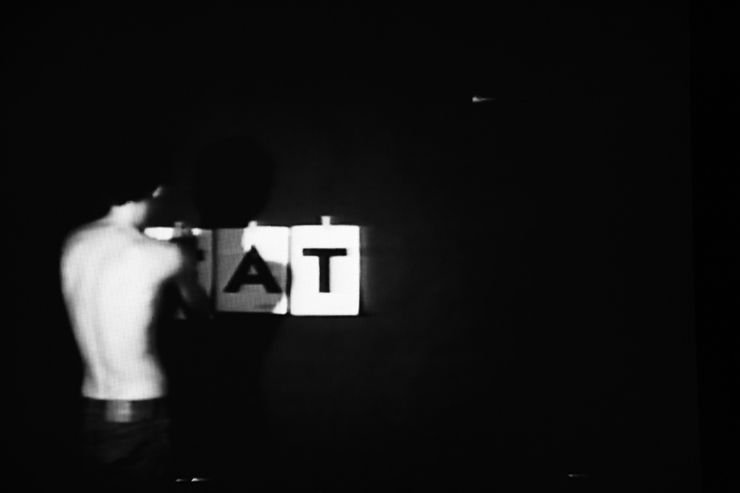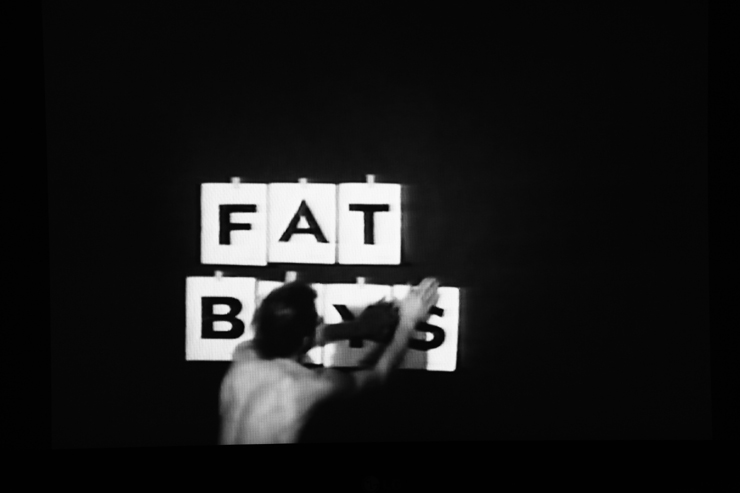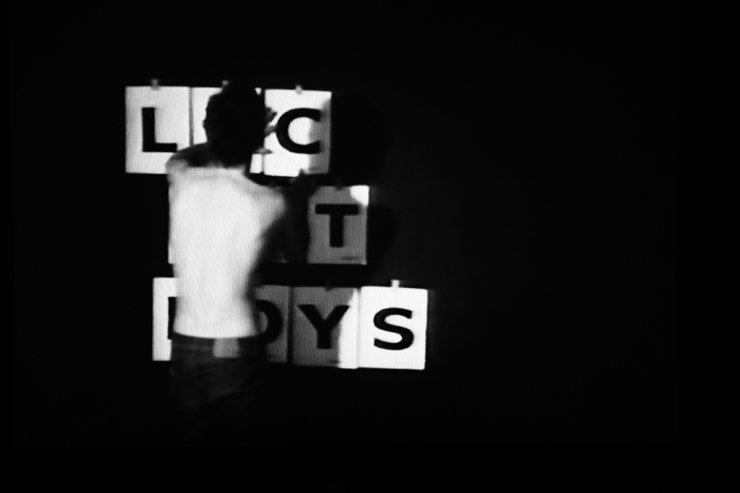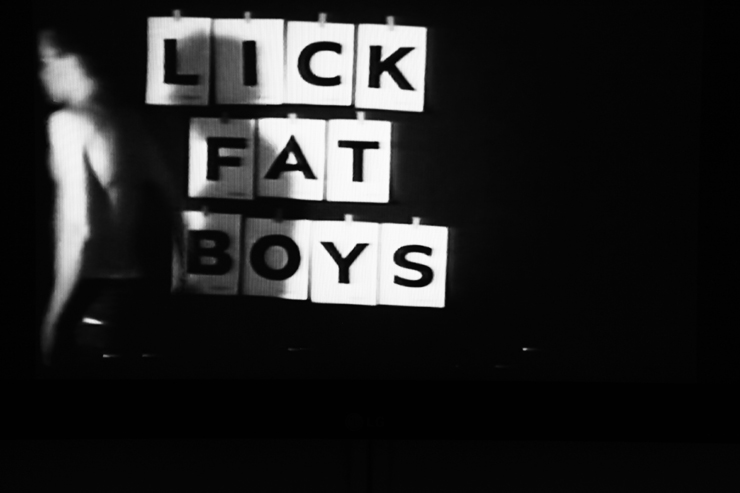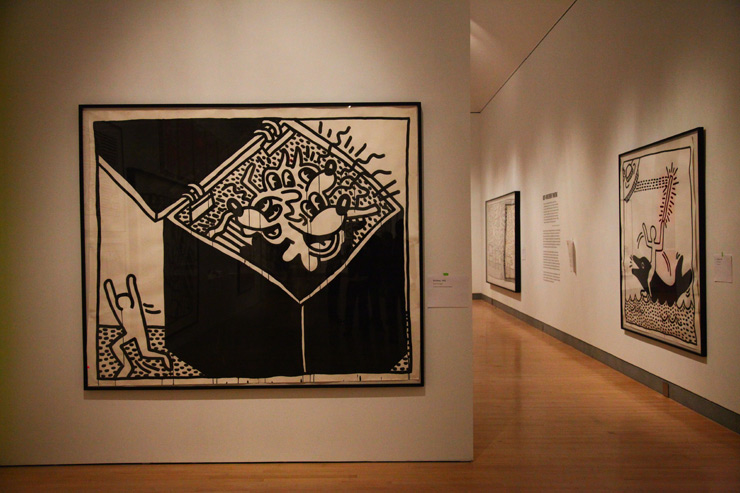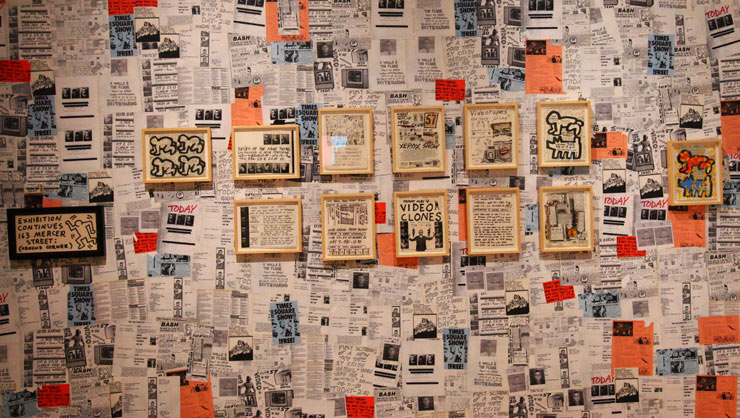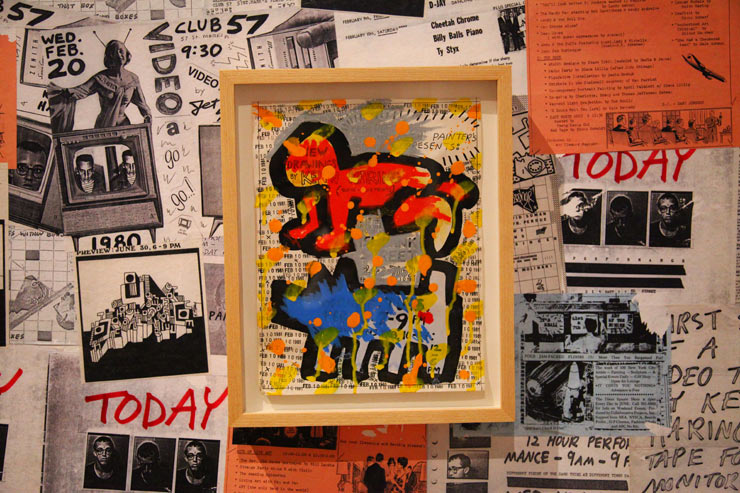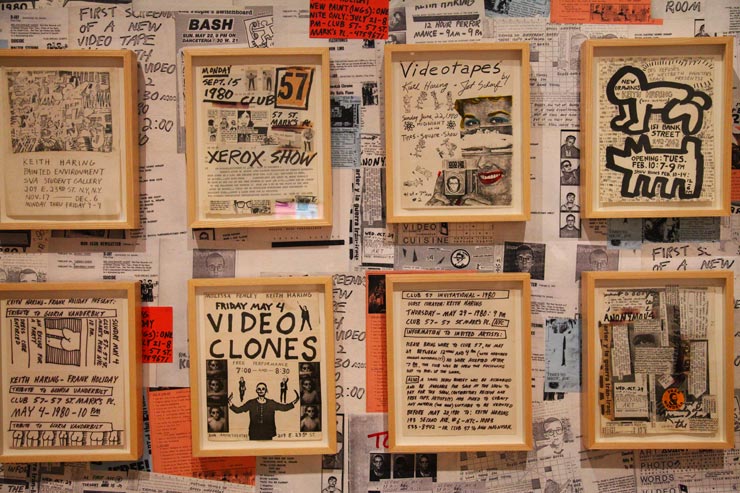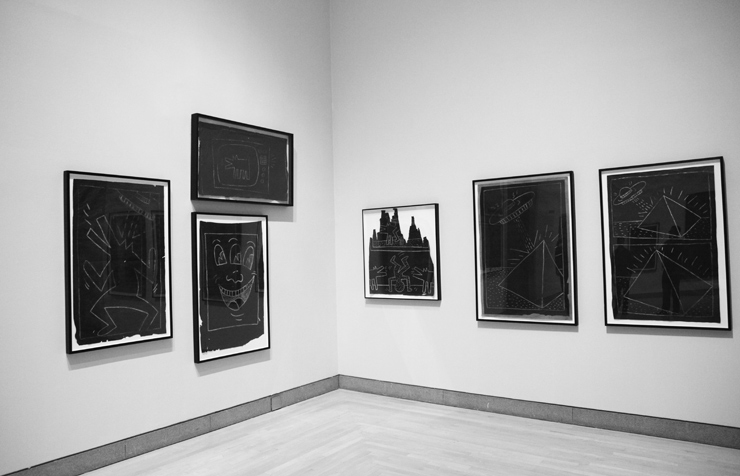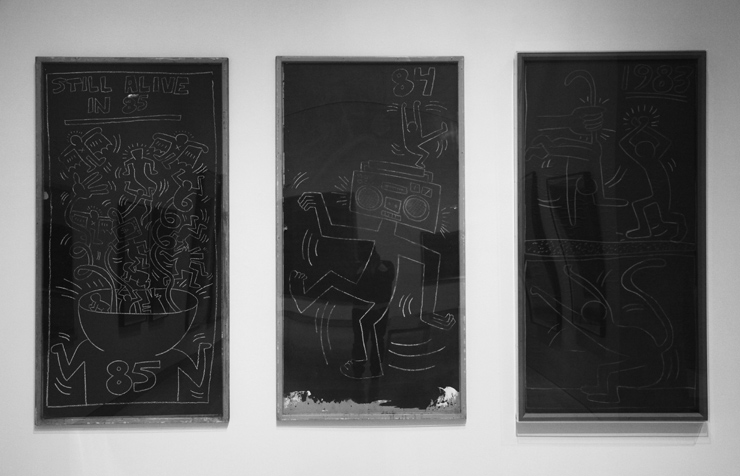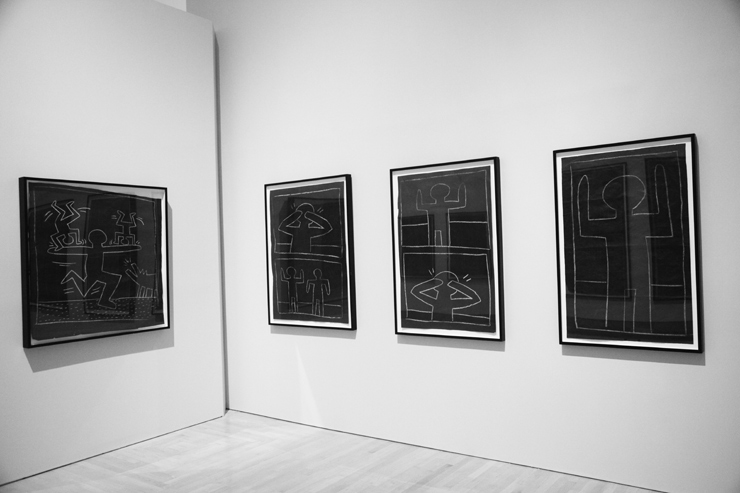Yowsah! It’s a Triple Header for Street Artist shows in Brooklyn tonight, with Haring at the Museum, Stikman at Pandemic, and JMR/See One at Mighty Tanaka. But that’s not all that’s happening this weekend.
1. Keith Haring: 1978-1982
2. Stikman “20” at Pandemic
3. JMR and See One @ Pandemic
4. SANER @ Fifty24SF (San Francisco)
5. Chris Stain “Long Story Short” at Wooster Social Club
6. Sickboy, White Walls Gallery new show “Wonder Club”
7. Asbjorn Skou AKA Armsrock “Stedfortrædere” at Mosh Gallery in Copenhagen
8. “My Turn” at Carmichael Gallery with Bumblebee, Hyuro, Interesni Kazki, Jaz, Klone, LineLineDot, Moneyless, Penny, Stinkfish, Zeus.
9. KEMP “Behind her Disguise” at Artsee.
10. Kid NES in Dallas. Time Lapse (VIDEO)
11. Mimi The Clown turns Superhero by OAOFB. (VIDEO)
12. Mimi The Clown turns Superhero by OAOFB. (VIDEO 2)
13. Ben Eine getting up in London by Abbie Brandon (VIDEO)
Keith Haring: 1978-1982
“This exhibition shows you how much fun New York City used to be” – Mare 139
Opening to the public today Keith Haring: 1978-1982 at the Brooklyn Museum and while Mare 139 has a point, we contend that Brooklyn is still tons of fun, if Manhattan has lost much of it’s edge. Regarding this exhibit, GO! Exquisitely curated, it welcomes the viewer to Mr. Haring’s early days in NYC when the “downtown” scene was the scene.
Keith Haring. Pia Zadora subway installation. Courtesy of Mugrabi Collection. © Mugrabi Collection. The Brooklyn Museum (photo © Jaime Rojo)
The curators have included pieces rarely or never before viewed including an amazing slide show of images taken by Kwong Chi showing the artist illegally putting work in the subways. Combined with some of Harings journals, his Cipher chart, videos and 155 works mostly on paper, it is informative, accessible and fun to see.
Keith Haring. A photo taken from the Slide show at the exhibition of images taken by Kwong Chi. Courtesy of and © The Keith Haring Foundation. The Brooklyn Museum (photo © Jaime Rojo)
For more information regarding this exhibition click here.
To read our article on the Huffington Post of this exhibition with a complete photo essay and and written overview click here.
Stikman “20” at Pandemic
One of the most prolific and hermetic Street Artists working today on the streets of New York, sometimes literally melted into the street, Stikman has a gentle legend to his name. His solo show “20” opens today at Pandemic Gallery today, offering a rare glimpse into his world of secrecy and continuous invention. The little stick character he’s been leaving for two decades is synonymous with the symbol-based tagging of graff writers and the re-inventive practice of a fine artist continuously exploring new techniques of expression.
Stikman (photo © Jaime Rojo)
For further information regarding this show click here.
JMR and See One @ Pandemic
Fresh off their showing at Fountain last weekend, Mighty Tanaka is not skipping a beat by unveiling a brand new dual show in Dumbo tonight. If you thrill to “Color and Motion” then check out new works by JMR and See One tonight.
JMR (photo © Jaime Rojo)
For further information regarding this show click here.
SANER @ Fifty24SF (San Francisco)
Mexican Street Artist SANER has been impressing Street Art and graff fans in the last couple of years with his near magic interpretations, incredibly rendered. A down to earth fellow who often teams up with SEGO for collaborations, the artist makes his debut solo show in San Francisco tonight at the Fifty24SF Gallery.
Saner with Sego in Miami (photo © Jaime Rojo)
For further information regarding this show click here.
Chris Stain “Long Story Short” at Wooster Social Club
At the crowded opening for Chris Stain’s new show and book launch Wednesday, the vibe was a testament to his working class roots and real people charm, with Billy Mode on the turntables and Ray Cross from Bushwick Print Lab screen-printing some fresh Occupy Wall Street posters for people to take to the streets. It’s the the kind of kindred community that fostered “Long Story Short”, his new monogram on Drago, and the kind of environment that makes Stains work resonant in these times where the working person feels like they have a boot to his/her neck. Stop by The Wooster Social Club anytime to see Mr. Stain’s new body of work and catch an intimate look into his influences both as an artist and as a person.
Chris Stain (photo © Jaime Rojo)
For further information regarding this show click here.
Also happening this weekend:
- San Francisco’s White Walls Gallery new show “Wonder Club” opens tomorrow. This is Sickboy‘s first US major solo show. Click here for more information about this show.
- Asbjorn Skou AKA Armsrock new show “Stedfortrædere ” at the Mosh Gallery in Copenhagen, Denmark opens today. Click here for more information about this show.
- Bumblebee curates the new show “My Turn” at the Carmichael Gallery in Culver City, CA opening this Saturday with artists including: Bumblebee, Hyuro, Interesni Kazki, Jaz, Klone, LineLineDot, Moneyless, Penny, Stinkfish, Zeus. Click here for more information about this show.
- KEMP solo show “Behind her Disguise” is marks his New York debut at Artsee. This show is now open to the general public. Click here for more information about this show.
Kid NES in Dallas. Time Lapse (VIDEO)
Mimi The Clown turns Superhero by OAOFB. (VIDEO)
Mimi The Clown turns Superhero by OAOFB. (VIDEO 2)
Ben Eine getting up in London by Abbie Brandon (VIDEO)
 BROOKLYN STREET ART LOVES YOU MORE EVERY DAY
BROOKLYN STREET ART LOVES YOU MORE EVERY DAY